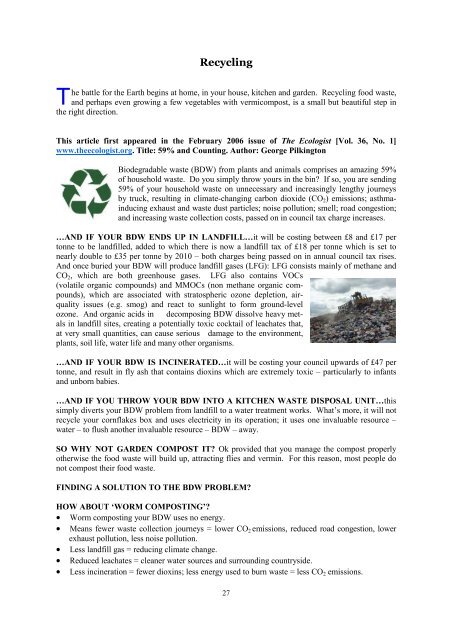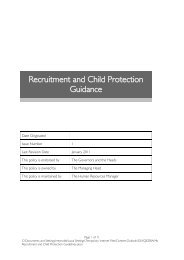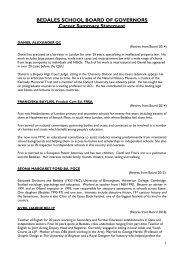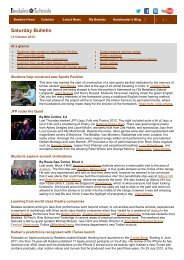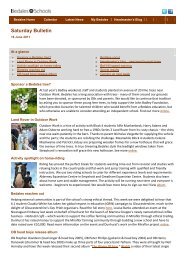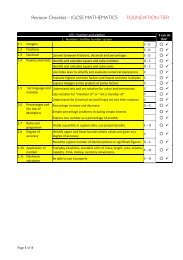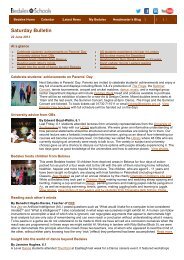Create successful ePaper yourself
Turn your PDF publications into a flip-book with our unique Google optimized e-Paper software.
Recyclinghe battle for the Earth begins at home, in your house, kitchen and garden. Recycling food waste,T and perhaps even growing a few vegetables with vermicompost, is a small but beautiful step inthe right direction.This article first appeared in the February 2006 issue of The Ecologist [Vol. 36, No. 1]www.theecologist.org. Title: 59% and Counting. Author: George PilkingtonBiodegradable waste (BDW) from plants and animals comprises an amazing 59%of household waste. Do you simply throw yours in the bin? If so, you are sending59% of your household waste on unnecessary and increasingly lengthy journeysby truck, resulting in climate-changing carbon dioxide (CO 2 ) emissions; asthmainducingexhaust and waste dust particles; noise pollution; smell; road congestion;and increasing waste collection costs, passed on in council tax charge increases.…AND IF YOUR BDW ENDS UP IN LANDFILL…it will be costing between £8 and £17 pertonne to be landfilled, added to which there is now a landfill tax of £18 per tonne which is set tonearly double to £35 per tonne by 2010 – both charges being passed on in annual council tax rises.And once buried your BDW will produce landfill gases (LFG): LFG consists mainly of methane andCO 2 , which are both greenhouse gases. LFG also contains VOCs(volatile organic compounds) and MMOCs (non methane organic compounds),which are associated with stratospheric ozone depletion, airqualityissues (e.g. smog) and react to sunlight to form ground-levelozone. And organic acids in decomposing BDW dissolve heavy metalsin landfill sites, creating a potentially toxic cocktail of leachates that,at very small quantities, can cause serious damage to the environment,plants, soil life, water life and many other organisms.…AND IF YOUR BDW IS INCINERATED…it will be costing your council upwards of £47 pertonne, and result in fly ash that contains dioxins which are extremely toxic – particularly to infantsand unborn babies.…AND IF YOU THROW YOUR BDW INTO A KITCHEN WASTE DISPOSAL UNIT…thissimply diverts your BDW problem from landfill to a water treatment works. What’s more, it will notrecycle your cornflakes box and uses electricity in its operation; it uses one invaluable resource –water – to flush another invaluable resource – BDW – away.SO WHY NOT GARDEN COMPOST IT? Ok provided that you manage the compost properlyotherwise the food waste will build up, attracting flies and vermin. For this reason, most people donot compost their food waste.FINDING A SOLUTION TO THE BDW PROBLEM?HOW ABOUT ‘WORM COMPOSTING’?• Worm composting your BDW uses no energy.• Means fewer waste collection journeys = lower CO 2 emissions, reduced road congestion, lowerexhaust pollution, less noise pollution.• Less landfill gas = reducing climate change.• Reduced leachates = cleaner water sources and surrounding countryside.• Less incineration = fewer dioxins; less energy used to burn waste = less CO 2 emissions.27


